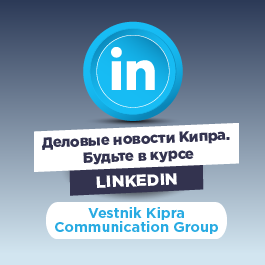Successful Business offers to its readers an overview of the trends that are expected to change the banking industry landscapes in 2021.
NEW TECHNOLOGIES ACCELERATE THE DIGITAL BANKING REVOLUTION
Kanika Hope, Global Strategic, Business Development Director, Temenos
This year’s Economist Intelligence Unit (EIU)’s report “Forging new frontiers: advanced technologies will revolutionise banking” based on a global survey of over 300 senior banking executives, highlights the role of new technologies in driving the digital transformation of banks in the coming years to help them gain competitive advantage, as they face slowing profit growth coupled with intense competition from technology and e-commerce disruptors and payment providers – pressures that have intensified as a result of the ongoing Covid-19 pandemic.
THE IMPACT OF NEW TECHNOLOGIES
Two-thirds (66%) of banking executives say new technologies will continue to drive global banking for the next 5 years compared to 42% of retail bankers in 2019. 84% of respondents agree that DevOps will drive transformation in core banking, while 81% of banking executives believe a multi-cloud strategy will become a regulatory prerequisite.
ARTIFICIAL INTELLIGENCE: A GAME CHANGER
The judicious use of artificial intelligence is seen as a key differentiator between winners and losers in the future. Building AI platforms is already the top technology investment area for banks, immediately after cybersecurity.
DIGITAL TRANSFORMATION ACCELERATED
Improving customer experience and engagement including intimacy and personalisation, migrating to digital channels, and digital marketing all feature at the top of banks’ list of strategic priorities. Even more dramatic is the finding that nearly 60% believe that the traditional branch-based banking model will be dead by 2025, compared to 44% last year. In turn, 75% believe cash will represent less than 5% of all transactions globally compared to 48% last year.
Covid-19 has woken up banks to the realisation that they have no option but to beef up their digital capabilities. Banks need to help non-digital customers, e.g. the elderly, rapidly adopt digital banking.
OPEN BANKING AND THE RISE OF PLATFORMS
With Covid-19 accelerating the digitisation of banking, 45% of banking respondents say their strategic response is to build a "true digital ecosystem" and integrate their self-built digital services and thirdparty offerings, in order to enhance customer experience and create new revenue streams. An overwhelming 83% of survey respondents believe that the platformisation of banking will steer the industry, an increase of 30% over last year.
TOP DIGITAL BANKING TRANSFORMATION TRENDS FOR 2021
Jim Marous, Co-Publisher of www.thefinancialbrand.com
When the pandemic hit, most financial institutions entered a crisis mode of building digital capabilities that allowed consumers to bank without branches. As we enter 2021, banks and credit unions must rethink the definition of "digital banking", with the application of data, analytics, technology, innovation, and people that will transform customer experiences.
1. Focus on digital banking experiences
2. Use of data and AI for predictive personalisation
3. Movement to cloud computing
4. Automation becomes a financial imperative
5. Investment in privacy and security escalates
6. Redefined future of work. Across the entire banking ecosystem, financial institutions are rethinking the way work is done, where it is done, and the skills that will be required to do work going forward.
7. Open banking as a revenue opportunity. According to Juniper Research, the number of open banking users is expected to double in size from 18 million in 2019 to more than 40 million by 2021.
THE FUTURE OF RETAIL, MOBILE, ONLINE, AND DIGITAL-ONLY BANKING TECHNOLOGY
Alicia Phaneuf, www.businessinsider.com
An increasing demand for a digital banking experience from millennials and Gen Z-ers is transforming how the entire banking industry operates.
FUTURE OF RETAIL BANKING
Retail banking refers to the specific services banks can offer to consumers – such as savings and checking accounts, credit and debit cards, and loans. Consumers' growing desire to access financial services from digital channels has led to a surge in new banking technologies that are reconceptualising the entire retail banking market. Retail banks are also launching platforms in the Banking-as-a-Service (BaaS) space to remain competitive.
FUTURE OF MOBILE BANKING
Mobile banking has become the go-to method for users to make deposits, account transfers, and monitor their spendings and earnings. According to Business Insider Intelligence's Mobile Banking Competitive Edge Study, a massive 89% of survey respondents use mobile banking.
DIGITAL MONEY MANAGEMENT APPS
Mobile wallets are another up-and-coming feature in mobile banking. Mobile wallets are applications that emphasise convenience; they allow users to make purchases online or in-store with their smartphones – without ever having to take out their physical credit card.
FUTURE OF ONLINE BANKING
According to Business Insider Intelligence, mobile banking is growing at five times the rate of online banking, and half of all online customers are also mobile banking users. FUTURE OF DIGITAL-ONLY BANKS Digital-only banks, also known as neobanks, are redefining the future of banking around the world.
BANKING TECHNOLOGY TRENDS
A common trend in banking technology is using an application programming interface (API) to make proprietary data available to anyone who has the consumer's permission to access it.







